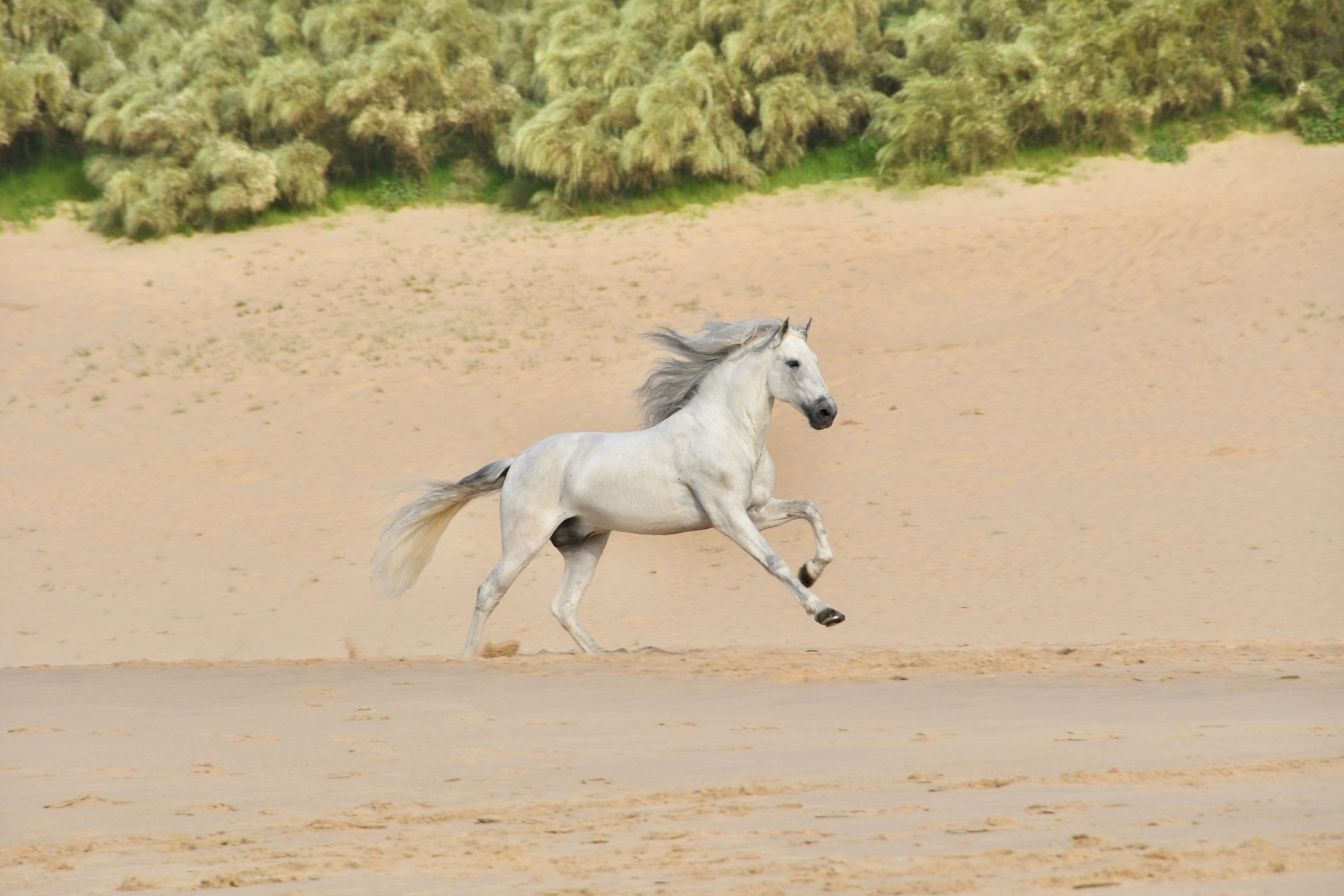Not every traveler to Southern Spain is aware of the profound cultural attachments Spanish people have for Andalusian horses. But for the wise Winetraveler who desires an authentic deep dive into the Spanish psyche, visiting Andalusian horses opens doors to understanding both history and culture.
IN THIS GUIDE:
- Tradition
- Warrior Horses
- The Buying & Selling of Andalusian Horses
- Where to See Andalusian Horses
- Activities with Andalusian Horses
- …and more
Why do Andalusian horses play such a part in Spanish tradition?
Andalusian horses are planted firmly in the hearts of the people of Southern Spain and beyond. Today you can see Andalusian horses at ferias—Spanish festivals—or in flamenco performances, or even in high-profile fashion campaigns (think Penelope Cruz straddling an Andalusian on the cover of Vogue last year). Heck, just last spring, one of the princesses of Monaco trotted her Andalucian horse down the runway to open the Chanel spring 2022 couture show in Paris.
And you don’t have to look far to see famous Spaniards, like El Cid (Burgos), Queen Isabelle (Madrid), or Simon Bolivar (Cadiz), immortalized astride majestic Andalusian horses on bronze equestrian statues in plazas around Spain.
How did the spirited and agile horse become such an icon for Spanish culture? A lot has to do with the long history of the horse in Spain. Even before 200 BC, when Roman chroniclers wrote home about the Iberian horse’s speed, strength and loyalty during their conquest of the peninsula, prehistoric humans celebrated local horses by painting them on cave walls north of Tarifa. Chariot racers coveted the swift Iberian horses, and as a result, suppliers transported the steeds across the empire.
RELATED: The Perfect 10-Day Southern Spain Itinerary: Andalusia
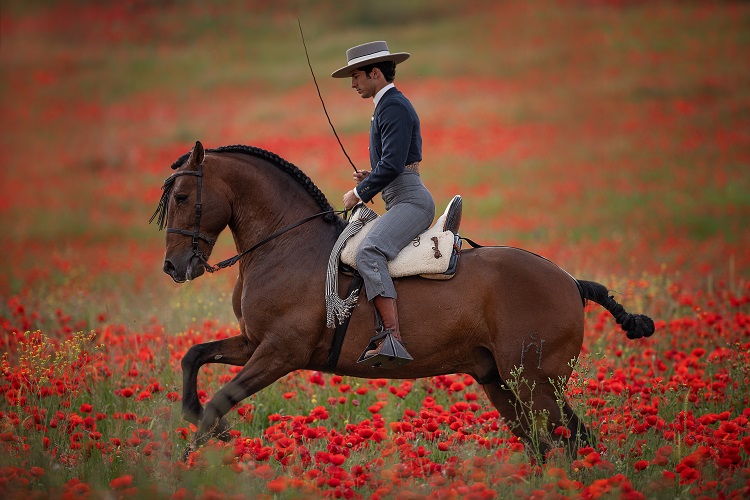
By the 15th century, the solid but elegant animals had already made a solid name for themselves when monks in Jerez de la Frontera, Spain, started breeding Andalusian horses to enhance their characteristics. The monks of the Carthusian order admired the steeds’ intelligence, calm temperament, and desire to work and so propagated those traits into the bloodline.
Warrior Horses
The Nuestra Señora de la Defensión, “Our Lady of the Defense,” monastery sold Andalusian horses to soldiers and armies around Europe as warrior horses. As such, the animals needed to be sturdy to carry warriors dressed in heavy metal armor. Fiery intellect and kind temperament were also key characteristics that needed to be maintained and enhanced in the warrior horses.
During Roman times, observers reported that Iberian horses stood unafraid beside their handlers amid raucous battles. In the 1400-1500s, monastics took that loyalty trait a step further and trained the horses to leap over advancing enemies and to balance on their hind legs to protect their riders. In retrospect, war horses are a curious product for monks to produce when monks brew beer or bake bread in today’s world to support the monastic communities.
After a time, the high-stepping dandy horses were known by the who’s-who of Europe as the Cadillac for pulling royal carriages, the Mercedes of saddle riding, and the Sherman tank of war horses.
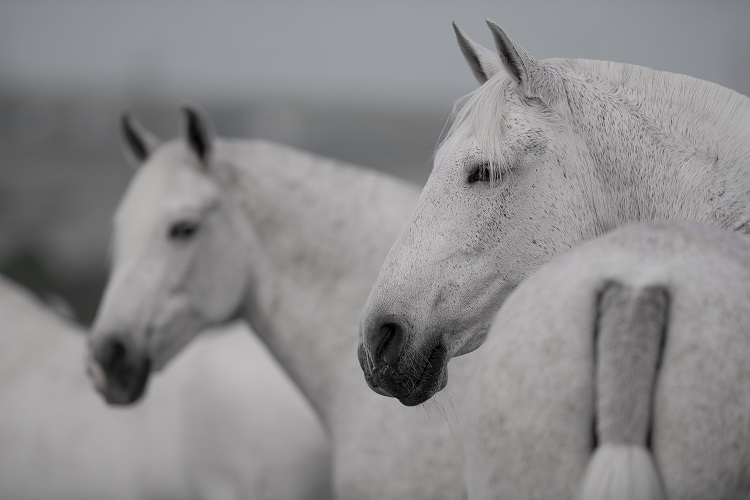
Let’s Make a Deal
As the years went by, horse fairs like Seville Feria, which still takes place two weeks after Easter, became increasingly popular. Ladies dressed to the nines and caballeros—Spanish cowboys—exhibited their best mares for sale. The aristocracy from around Europe came to make deals on the steeds, which were becoming something of royal trade ambassadors. One of those aristocratic buyers was the son of Emperor Ferdinand I of Austria, who introduced the Spanish horse to Austria around 1562. This bloodline was the foundation for the Lipizzan horses of the famous Spanish Riding School in Vienna.
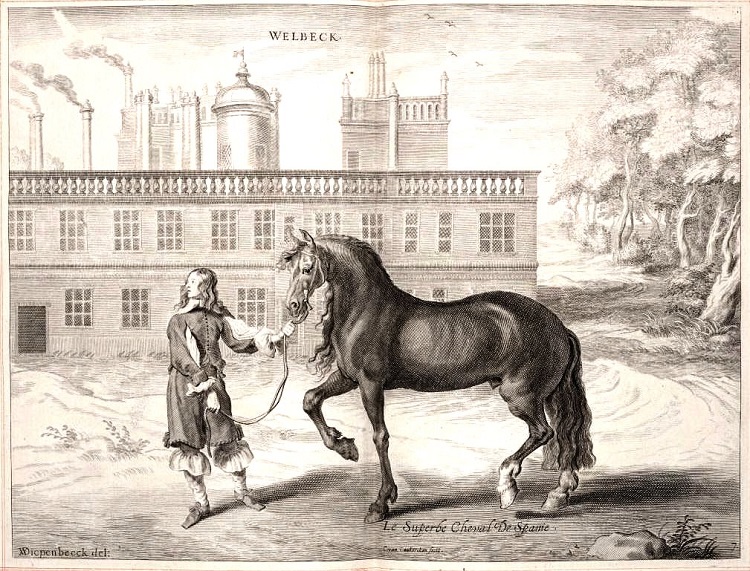
So, too, in the Spanish countryside, cattle owners used Andalusian horses to tend stock, and the breed’s agility and calm state of mind made it a star in the bullring. The Andalusian horse, now the pride of the Spanish people, became intricately woven into the fabric of Andalusian society.
When the combustible engine took the place of horsepower, the world’s desire for the fanciest mode of transportation turned from prancing horses to shiny automobiles. Yet the Spanish people continued their love and admiration for the fiery creatures. Consequently, in 1981, the Spanish government purchased horse farms to retain the horse heritage and traditions that went with it: riding, dressage, team pulling and more.
RELATED: 9 Authentic and Essential Things To Do in Seville Spain
Where to See Andalusian Horses
Today, the State Heritage Department maintains La Cartuja-Hierro del Bocado Stud Farm in Jerez de la Frontera to preserve and enhance the gene pool of the Andalusian lineage.
The working stud farm is open to the public on Saturdays. You don’t need to be a horse lover to appreciate the preservation work that has gone into the stables, carriages, stud farms, and live horse expositions set to moving traditional Spanish and contemporary music.
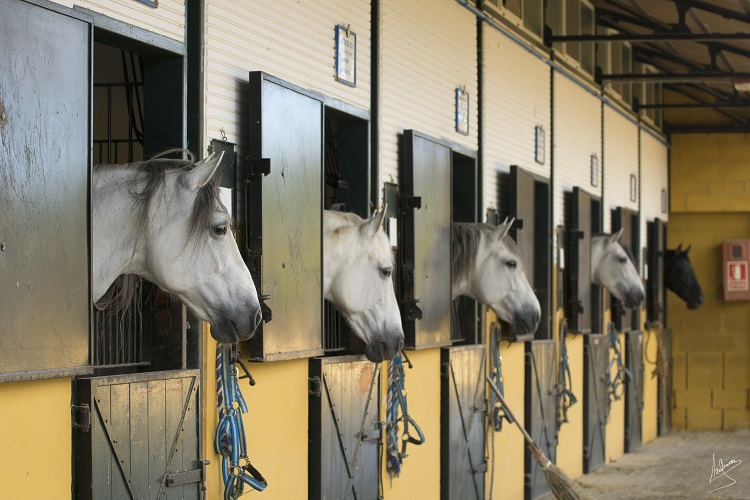
You’ll experience a rush of air as horses, manes swinging, necks arching and legs kicking high, pull traditional wagons past you in the open courtyard. The atmosphere, scented with hay and soaped leather, activates your senses as you move from stall to stall, petting the broad foreheads of the majestic stallions. The friendly beasts love the attention and, after a scratch behind the ears, might give you a nuzzle back. Perhaps the stud lacking such affection will start to whinny, which triggers a symphony of whinnies and snorts.
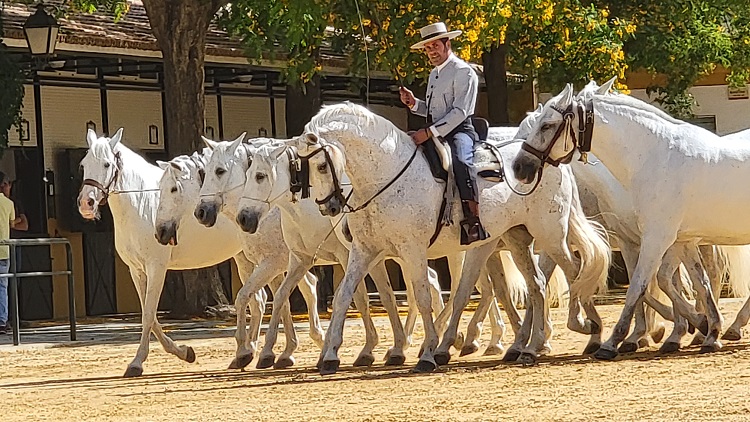
In the covered exhibition area, you’ll sit comfortably to watch various performances demonstrating the Andalusian horses’ intelligence and loyalty to their handlers. The equestrian show tells a story, like any theatrical production, with acts set to music that moves the audience through the show. A favorite performance is a caballero, who uses voice commands and lead ropes to handle eight haltered mares in unison like aqua ballerinas without the water. The Andalucian horses seemed to have rehearsed the routine that demonstrates the dramatic beauty of movement.
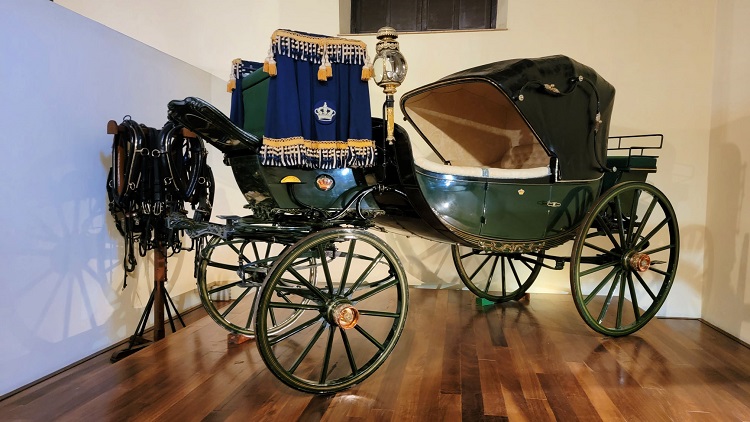
Displays of traditional wagons and royal carriages in the carriage house are a feast for the eyes. No, these are not museum pieces but actual working coaches. If a museum is what you’re looking for, then be sure to visit the Museum of Equestrian Art at the Royal Andalusian School of Equestrian Art, also in Jerez. The museum uses state-of-the-art technology to stimulate all the senses while telling stories about the art of horsemanship.
The Royal Andalusian School of Equestrian Art is renowned for its show “How Andalusian Horses Dance,” an equestrian ballet choreographed to traditional Spanish music. The school offers performances on weekdays. A complete visit will help you connect to the local Andalusian horse culture with tours of the 19th-century Palacio del Recreo de las Cadenas designed by the architect of the Paris Opera and Monte Carlo Casino, and now school headquarters; the Museum of Equestrian Art; the Carriage Museum; stables and tack room, and training sessions in the indoor arena.
After the show, head over to La Carboná, a Michelin-recommended restaurant in a contemporary remake of a traditional Jerez bodega. Chef Javier Muñoz Soto focuses on incorporating the quintessential regional ingredient, sherry wine, into his delectable creations.
Activities with Andalusian Horses
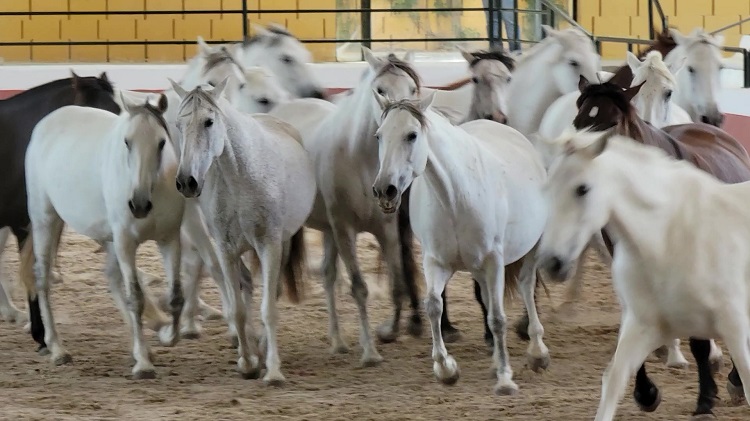
La Cartuja-Hierro del Bocado Stud Farm
Carretera Medina El Portal CA3109, km 6.5 11400, Jerez de la Frontera
Saturday only
Royal Andalusian School of Equestrian Art
Avenida Duque de Abrantes S/N. 11407, Jerez de la Frontera
Weekdays
Caballerizas Reales, 1, 14004, Córdoba
Check event calendar online
Ride and Stay
Carretera Cortes, Km 10 Cañada Albadalejos – Cuartillos,
11593 Jerez de la Frontera
Featured image: Andalusian horse on Playa Muralla, photo by Alfredo Casquete, courtesy of Yeguada Cartuja.
You are reading “See and Interact with Incredible Andalusian Horses in Southern Spain” Back To Top
horses in Spain, unique things to do in Spain, activities in southern Spain: trending destinations in Spain
If you enjoyed this guide, make sure you register to become a Winetraveler for free! You’ll get access to all of our content and interact with other Winetravelers and for travel inspiration around the world. Be sure to follow along with us on Instagram as we continue to feature more exciting destinations.
